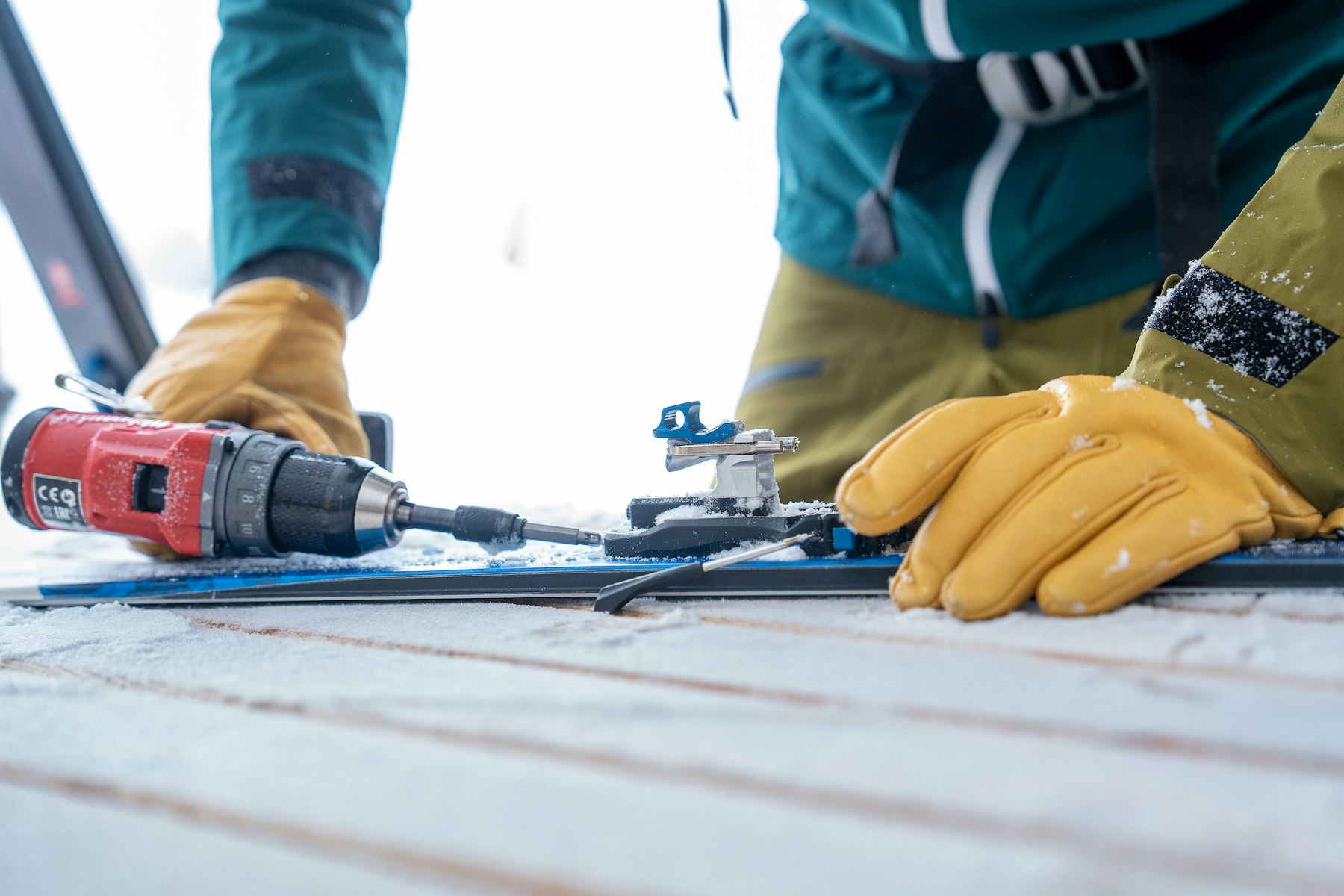Bindings: more than lightweight, clean and smart
Ski brakes or leash?
- Author: Claudio Primavesi
- Photographer: Nicola Damonte
So what about bindings? OK, light, we get it. But light touring means on and off with the skins and a four-thousander in a day, so bindings need to be quick and easy.
No triple or quadruple climbing aids, and no rotating heel towers. A light touring boot already has excellent ROM, so you just need the flap to raise your heel a couple of notches. For some, the race-style aid may be enough. Be careful with the drill pattern for the binding, which depends on the width of the skis, and here there’s a wide selection. On a 90-millimeter ski, even one that weighs just over a kilo, it’s best to go with general reliability and the performance of the system as a whole and pick a pattern with a wide base.

And how about ski brakes or leashes? It’s a matter of preference, but given how reliable today’s brakes are, we’d go with those, since they don’t add much weight to the ski. In an expert guide like this, we really can’t recommend not using a stopper or a leash at all. Not that it’s not done, far from it. But it’s for those who are very careful and confident. It’s generally done by experts and competitive skiers who’ve never had the thrill of losing a ski halfway up a mountain and having to make it back down on one somehow. For fitness touring, a brake or a leash is required in resorts. They may never actually check, but lift operators will occasionally stop you. This is because, on a groomer, there’s just about no way a ski will stop on its own without crashing into something or someone. After all, if you’re looking to reduce weight to save energy, not to enhance performance, you’ll definitely want a touring binding with all the bells and whistles, including climbing aids and, of course, a stopper. A few extra grams is worth the added comfort you’re after.
Share this article

